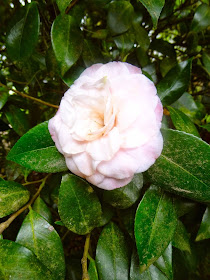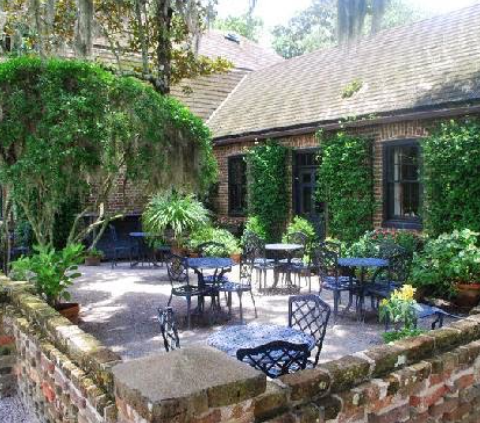To visit Charleston is to step into a world that harkens back to the antebellum South. They call this land the Lowcountry, where one finds life moving at a slower pace, the people laid back and speaking with a hospitable and endearing Southern drawl. One of the main highlights of stepping into this rich historical tapestry is by visiting some of the area’s beautiful antebellum plantations, which were a staple of the economy, culture and lifestyle of the pre-Civil War South. Along the Ashley River Road National Scenic Byway, an 11-mile section of road with sunlight sifting in golden strands through Spanish moss hanging from massive live oaks, provides the perfect setting for three spectacular plantations: Middleton Place, Magnolia Plantation, and Drayton Hall, with Boone Hall Plantation & Gardens on the other side of the river.
The prettiest of them all is Middleton Place. This former plantation is home to America's oldest landscaped gardens, begun in 1741 by Henry Middleton, second president of the First Continental Congress. From camellias to roses, blooms of all seasons form floral allées along terraced lawns and gardens around a pair of ornamental lakes that are shaped like butterfly wings, in addition to panoramic marshland views featuring the magnificent 900-year-old Middleton Oak. As for the house, a large part of the three-building residential complex was destroyed during the Civil War, but the "South flanker" that contained the gentlemen's guest quarters was restored, and now serves as a house museum, displaying impressive English silver, furniture, original paintings, and historic documents, including an early silk copy of the Declaration of Independence.
In the stableyards, historic interpreters use authentic tools to demonstrate spinning, weaving, blacksmithing, and other skills from the plantation era. Heritage-breed farm animals, such as water buffalo and cashmere goats, are housed here, along with peacocks. A gorgeous walk during the height of Spring, a spectacular array of flowers bloom everywhere on the plantation, making Middleton, according to the Garden Club of America, one of the "most interesting and important gardens in the U.S." If all this leaves you feeling peckish, head over to the cozy Middleton Place Restaurant for excellent Lowcountry specialties, based on original recipes by renowned Southern Chef Edna Lewis who was the resident chef for several years.
“Where flowers bloom, so does hope.”
– Lady Bird Johnson -
Middleton Plantation Reflection Pond with swans
Garden path overlooking the pond
Flowers in one of the 'Secret Gardens'
A quiet garden bench overlooking the reflecting pond
Garden path leading to the Camellia Allées
A camellia in full bloom
'The Four Seasons' sculpture nestled in the secret gardens
The 900 year old Middleton Oak off the formal gardens and overlooking the Ashley River
Moss covered oaks line the banks off the Ashley
A picturesque wood garden gate
Horse and carriage ambling through the 'greensward'
Middleton Plantation House viewed from the gardens
The Plantation Chapel
The Mill Pond behind the Chapel
One of the resident peacocks in full show, in the Middleton stable yard
Giving us a full showing, the peacock gave us a view from the backside too!
Protective of their area, the goose was attempting to stare me into retreat
A very sleepy Guinea Hog, which was a common breed on southern plantations until they were replaced by modern breeds — nowadays, they're a rare heritage breed
The candle and soap-making area of the plantation, where both free and enslaved workers spent much of their days
Chickens were also raised at Middleton
Coopers fashioned barrels for storage and shipment of rice which was the main crop of the Plantation, as shown by resident Cooper Doug Nesbit
Arthur-the-cat, who likes to lounge around the cooper, chewing on rice sheathes
The Blacksmith Shop
Harold, a cashmere goat
Horses were used to plough the fields
"Eliza's House", a circa 1870 two-family dwelling for the enslaved at Middleton Place, both before and after the Civil War
Carriage tours take guests around the plantation
A herd of Gulf Coast sheep keep the grass well trimmed
Middleton Place viewed from the side
View of the restored Middleton Place from the right side
Another gorgeous peacock strutting through the gardens
The restaurant at Middleton Place, which was once a guest house, serves low county lunch every day, and candlelit dinners in the evening based on original recipes by acclaimed chef Edna Lewis
The tranquil outdoor garden terrace of the restaurant
Middleton Place Pecan Pie
Serves 6-8
Recipe courtesy of Chef Edna Lewis, Middleton Place
Crust:
1 cup lard
2 tbsp butter
2 cups flour
1 tsp salt
4 tbsp cold water
Filling:
1 cup corn syrup
1 cup granulated sugar
2 tbsp butter, melted
1 tsp vanilla extract
3 large eggs
1 1/2 cups chopped pecans
Whipped cream, chopped nuts and mint, for garnish
In a large bowl, place the lard and butter. Add the flour and salt and rub together with fingers to form small balls. Add the cold water, 1 tablespoon at a time, mixing the flour mixture in between each tablespoon. Only add enough water until dough comes together in one large ball.
Spread some flour on a piece of waxed paper and place the dough on it. Sprinkle some more flour on top of the dough and proceed to roll out the dough until desired thickness, about 1/8 inch thick. Fold the dough over once to make a half moon and again to make it a quarter moon. Remove the dough from the waxed paper and place into a 9-inch pie pan. Unfold the dough so that it covers the entire pan. Press dough gently into pan. Using a fork, crimp the edges of the dough along the edge of the pie pan and cut away excess dough with a pairing knife. Set the pie shell aside.
Preheat the oven to 325°F. In a bowl, combine the corn syrup, sugar, butter, vanilla, and eggs. Mix with a whisk until well incorporated. Place the pecans in the pie shell and pour mixture over nuts. Be careful not to overflow the shell. Bake the pie for 45 minutes. The pie should be firm and golden brown. Let pie cool before cutting. Pie may be garnished with whipped cream, nuts and mint.
Middleton Place Corn Pudding
Serves 4
Recipe courtesy of Chef Edna Lewis, Middleton Place
2 cups yellow corn
2 whole eggs
3/4 qt heavy cream
1/4 tsp nutmeg
pinch of salt and pepper
Place yellow corn in a greased casserole pan. Mix all other ingredients together. Pour mixture over corn and bake for 45 minutes at 350°F or until golden brown.

































































